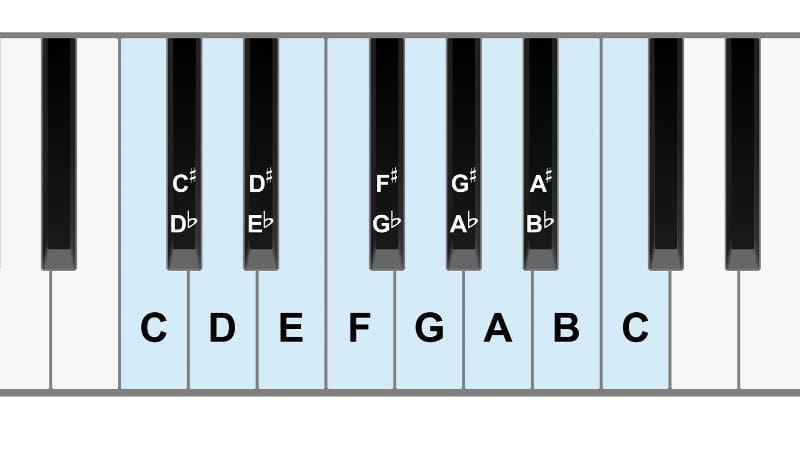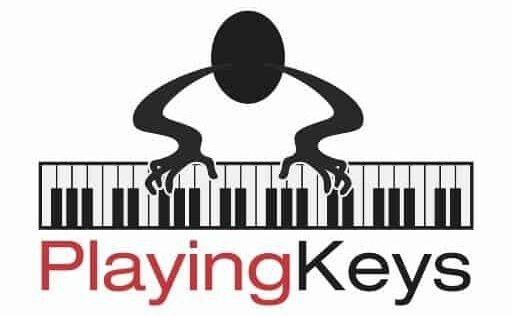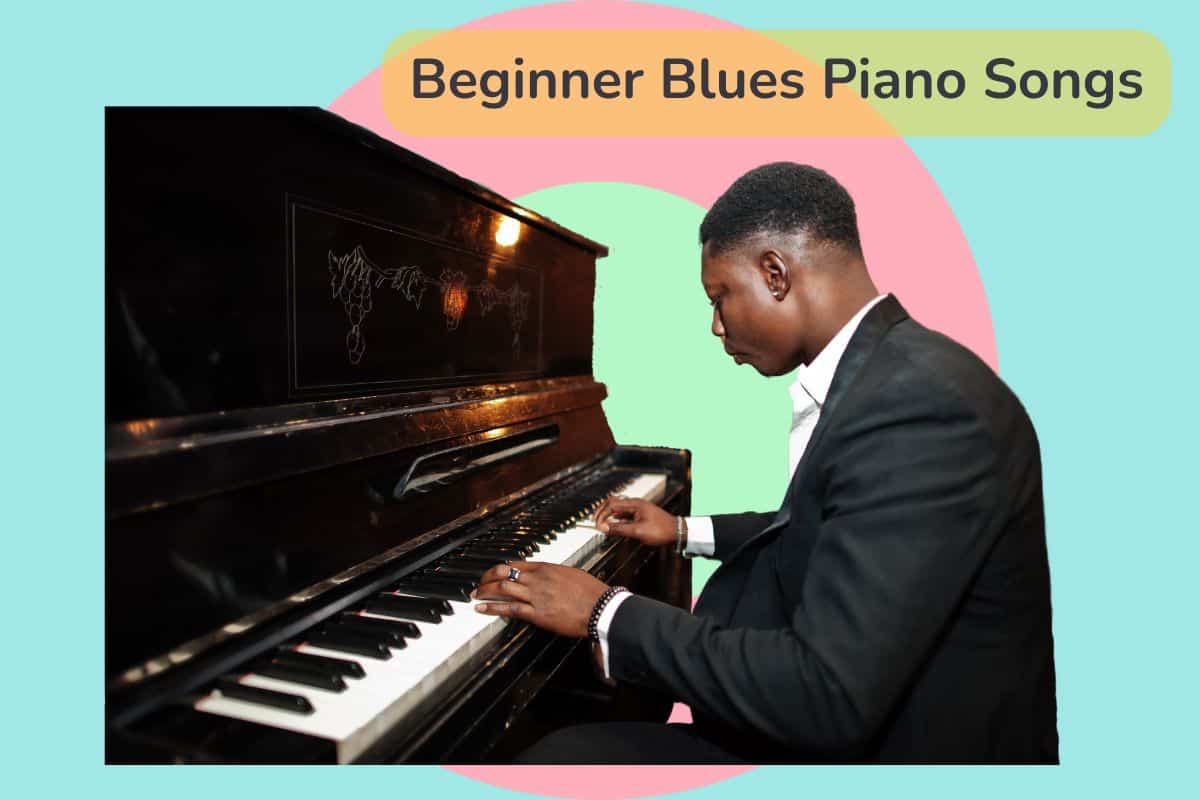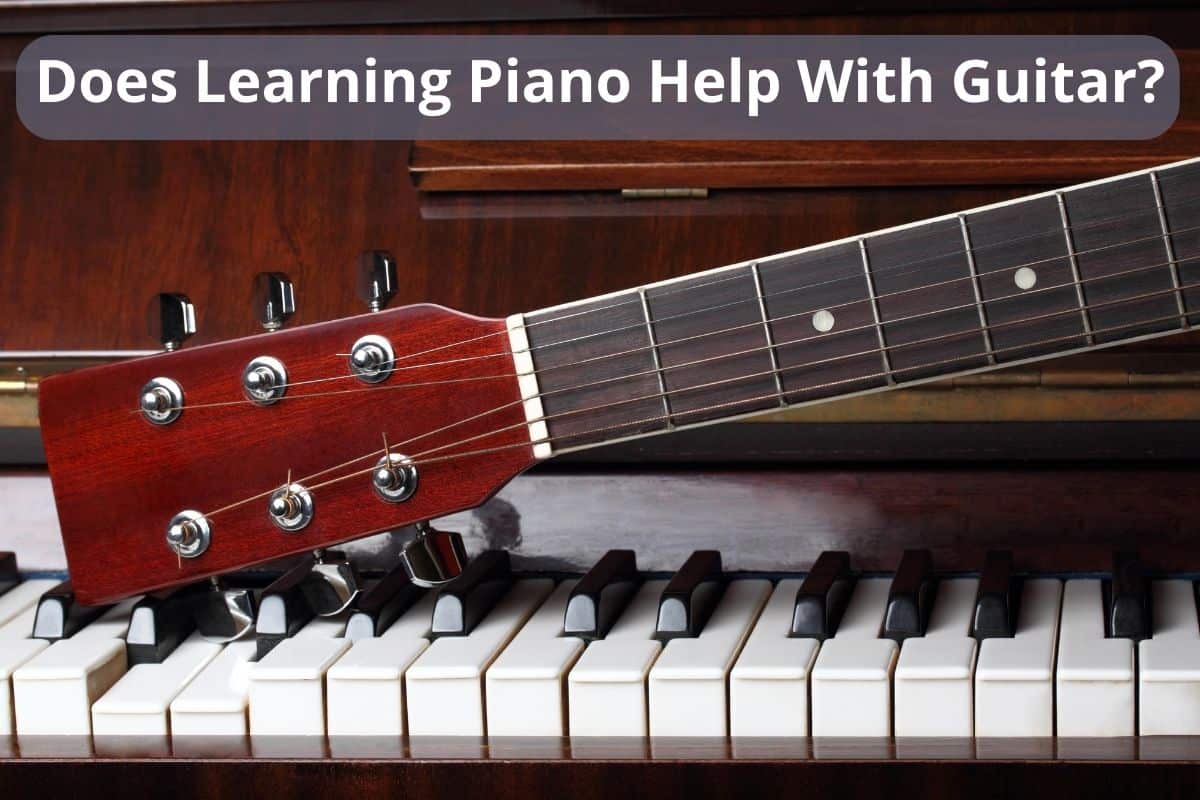As you start to learn how to play the piano, there are foundational skills you’ll need to pick up to make the most of your learning experience.
Developing your piano skills involves more than just knowing where the notes are. It’s also about building finger strength and dexterity through regular practice.

As your confidence grows, you’ll find yourself eager to explore a wide repertoire, building a solid foundation that will allow you to enjoy playing piano for years to come.
Getting Acquainted with the Piano
Before you can make music, it’s important to understand your instrument inside and out. Let’s get you comfortable with your piano keyboard and the fundamentals of music theory.
Understanding Keyboard Geography
Your piano keyboard is a map of white and black keys. The white keys represent the seven notes of the musical alphabet: A, B, C, D, E, F, G. After G, the pattern repeats starting back at A. The black keys are grouped in twos and threes and are respectively sharp (#) or flat (b) variations of the white keys.
Here is a simple representation of an octave on the keyboard:

Familiarizing Yourself with Music Theory
Music theory is the language musicians use to understand and communicate the elements of music. It includes understanding notation, which is the written representation of music, and the basic building blocks like:
- Notes: Pitches represented by symbols on a staff
- Chords: A grouping of notes played together
- Scales: A series of notes in a particular sequence
As a beginner, start by learning the note names and find where they are on the keyboard. Then, move on to learning simple chords and scales in keys that have fewer sharps and flats, such as C major. This foundation establishes a solid base for further exploration into more complex music theory concepts.
Fundamentals of Piano Technique
Mastering the fundamentals of piano technique is crucial as a beginner. It lays the groundwork for progress and helps prevent injury.
Proper Posture and Hand Position
When sitting at the piano, ensure your feet are flat on the floor and your back is straight but relaxed. Your elbows should be slightly above the keys with wrists level, avoiding any tension. Proper hand position involves curved fingers, with the thumb and pinky not too stretched out, creating a natural, dome-like shape over the keys.
Basic Finger Exercises
Begin with simple five-finger scales to build strength and dexterity. Start slowly, pressing each key with a gentle motion from your fingers, not from the arm. Utilize finger numbers to maintain consistency. For example, thumb (1) on C, index (2) on D, up to pinky (5) on G, and back down, for both hands.
Importance of Scales and Arpeggios
Scales and arpeggios form the backbone of technical skill on the piano. They teach you key patterns and finger independence. Practice scales with attention to evenness, starting with C major and gradually adding sharps and flats. Arpeggios, or broken chords, improve your ability to move across the keyboard. Begin with triads (three-note arpeggios) before moving to more complex patterns.
Learning to Read Music
Reading music is a fundamental skill you’ll need on your journey to becoming proficient at the piano. It allows you to translate notes and rhythms on a page into audible music.
Reading Sheet Music Basics
Sheet music is a form of musical notation that represents the pitch, rhythm, and timing of a song. As you’re learning the piano, you’ll mainly encounter two types of clefs on sheet music: the treble clef and the bass clef. The treble clef is used for higher notes, which you’ll often play with your right hand, while the bass clef is used for lower notes, played with your left hand.
Understanding the staff: The staff consists of five lines and four spaces. Each line and space represents a different note. For example, the note F can be found on the first space of the treble clef, while in the bass clef, it’s the second line from the top.
The Grand Staff: This is a combination of both the treble and bass clefs, and it’s what you’ll encounter most often in piano music. Middle C is a pivotal note that acts as a reference point, located near the middle of the piano, and it is the note directly below the treble clef staff or directly above the bass clef staff.
Identifying Notes and Rhythms
When learning to read piano music, you’ll need to recognize individual notes and their rhythms. Notes have different shapes indicating their duration.
Notes: A note’s position on the staff tells you its pitch, with A to G repeating throughout. For a quick reference:
- In the treble clef, the notes on the lines from bottom to top are E, G, B, D, F, often remembered by the phrase “Every Good Boy Does Fine.”
- In the bass clef, the notes on the lines are G, B, D, F, A or “Good Boys Do Fine Always.”
Rhythms: It’s not just about note placement but also note value. The shape of a note head, presence of a stem, and flags or beams affect the note’s value – how long it is held. For instance:
- A whole note is held for four beats.
- A half note is held for two beats.
- A quarter note is held for one beat.
The Role of Sight Reading
Sight reading is the ability to read and perform music at first sight, a vital skill for playing new pieces effectively. It’s about recognizing patterns in the music quickly and translating them into hand movements without hesitation. Practicing sight reading regularly will improve your overall fluency and make learning new pieces much more straightforward. Start with simple pieces and gradually increase the complexity as your confidence grows.
Playing Your First Songs
Starting with a selection of easy songs can build your confidence and skills. Your initial repertoire will reinforce fundamentals while providing a sense of accomplishment.
Simple Pieces and Repertoire Building
Start with songs that have straightforward melodies and minimal chord changes. This approach helps you focus on the essentials of rhythm and note accuracy. Here’s a list of well-known songs that are ideal for beginners due to their easy-to-learn patterns:
- “Twinkle Twinkle Little Star”: A timeless melody that helps you practice scale patterns.
- “Happy Birthday”: Great for mastering simple chord transitions and getting used to playing for an audience.
Craft a balanced repertoire that challenges you slightly but isn’t too daunting. Including a variety of genres in your song selection exposes you to different rhythmic and melodic styles, enhancing your musicality and keeping practice enjoyable.
Exploring Chords and Melodies
Once you’re comfortable with playing basic melodies, it’s time to explore beautiful piano chords that add depth to your music. Here are some fundamental chords to learn:
- C Major: Comprised of C, E, G. It’s very common and often one of the first chords taught.
- G Major: Includes G, B, D. This chord provides a satisfying, full sound and pairs well with C Major.
Learning these chords allows you to play a vast array of songs and understand chord progressions, which are the building blocks of music. When you start combining chords with melodies, you’ll notice how they enrich your playing, giving life to even the simplest of tunes. Practice songs that use these chords to get a handle on transitioning smoothly between them, and gradually incorporate more complex chords to enhance your musical vocabulary.
Practice Techniques for Improvement
Mastering the piano requires structured practice and hand coordination. Here’s how you can enhance your skills with some targeted techniques.
Effective Practicing Strategies
Set Specific Goals: Each time you sit at the keyboard, have a clear objective. Decide whether you’re learning a new piece, improving your sight-reading, or working on scales.
- Daily Practice: Aim for at least 20 minutes of focused practice each day. If you have more time, consider breaking it up into several sessions.
- Purposeful Sessions: Understand what you’re practicing and why. Each session should have a distinct purpose that contributes to your overall learning objective.
- Mindful Repetition: It’s not just about the quantity of practice but the quality. Repeat difficult sections slowly, and gradually increase the speed as you become more comfortable.
Developing Hand Coordination
Warm-Up Exercises: Before diving into pieces, start with exercises that promote hand independence, such as scales and arpeggios.
- Hands Separately: When learning a new piece, practice each hand on its own to focus on the intricacies before trying them together.
- Slow Tempo: Begin learning sections at a slow pace to ensure accuracy and gradually build up to the proper tempo, maintaining hand coordination.
- Metronome Use: A metronome can help maintain a steady beat and improve rhythmic precision, essential for hand coordination.
Progressing Beyond the Basics
Moving past the basics in piano involves honing your skills and adding complexity to your playing. You’ll work on mastering techniques and challenging your abilities with advanced concepts.
Expanding Your Technical Skills
As you progress, it’s crucial to advance your technique, which includes developing finger strength and control. Start practicing scales, arpeggios, and chords with an emphasis on speed and accuracy. To improve:
- Scale Speed: Begin slowly and incrementally increase the tempo as you grow more comfortable.
- Control Exercises: Practice with varying dynamics, playing both loudly and softly to build control.
- Strength Development: Use finger independence exercises to enhance agility and power in each finger.
Incorporating these practices consistently will make complex pieces more approachable.
Integrating Advanced Concepts
Understanding music theory and progressions enriches your piano playing and opens up new avenues for creativity. Tackle advanced concepts by:
- Studying key signatures and circle of fifths to familiarize yourself with different keys.
- Learning chord progressions commonly found in a variety of music genres.
- Delving into piano lessons tailored to expose you to advanced pieces and styles.
When you’re starting out, it’s normal to face hurdles in your piano journey. Understanding how to handle frustration and technical standstills is crucial to your progress.
Dealing with Frustration and Setbacks
You’ll inevitably feel frustrated when notes don’t flow or fingers fumble. When this happens, it’s important to stay calm and remember that every pianist started as a beginner. If you’re struggling with a particular piece, break it down into smaller, manageable sections and tackle them one by one. Remember, you can always slow down the tempo. Playing slowly but correctly is more beneficial than rushing through with mistakes. If the frustration becomes overwhelming, don’t be afraid to take a short break to relax and clear your head before returning to the keys.
Overcoming Technical Plateaus
Hitting a plateau is common as you’re learning. If you’re practicing diligently but not seeing results, it’s time to evaluate your approach. Focus on strengthening your fingers with exercises that challenge your dexterity. Pay special attention to your left hand, as it’s often less agile than your right. For rhythm, clapping or tapping to the beat of the music can help internalize the feel of a piece. Don’t forget to listen critically to the sound you’re producing; even if you’re playing the right notes, expressing the music’s intention is key. Keep your learning comfortable—if something feels off, it probably is. Adjust your bench height, posture, or hand position to stay relaxed.




